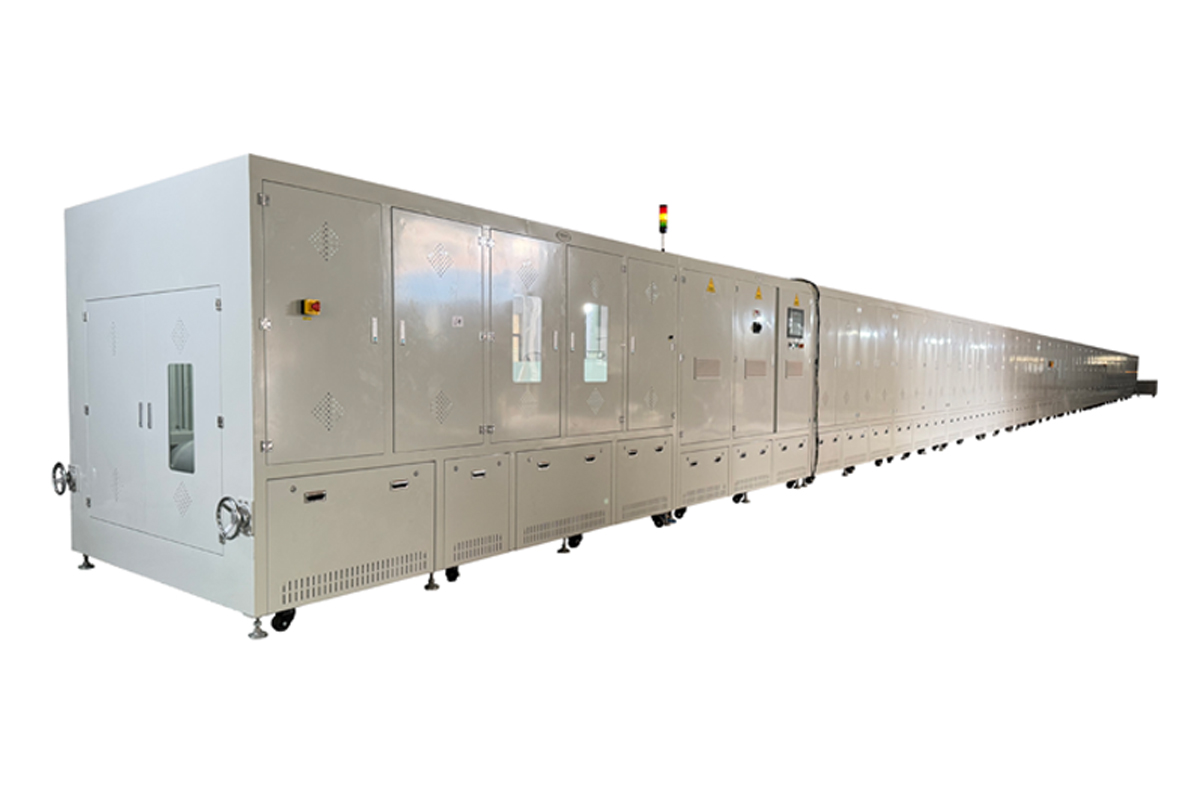50 Meters Gas Drying Oven: Comprehensive Technical Overview
Introduction
The 50 Meters Gas Drying Oven is an industrial-scale thermal processing equipment designed for high-volume drying applications. With its 50-meter continuous drying tunnel, this system represents a significant advancement in large-scale industrial drying technology, offering superior efficiency and precision compared to conventional drying solutions.

Technical Specifications and Features
Core Technical Characteristics
Drying Capacity: Up to 5,000 kg/h (material dependent) with uniform moisture reduction
Temperature Range: 50°C to 300°C (±1°C precision) with 10-zone independent control
Heating System: High-efficiency 1.2 MW gas burner with 92% thermal efficiency
Conveyor System: 50-meter stainless steel mesh belt (Grade 316) with variable speed control (0.5-5 m/min)
Airflow Design: 30,000 m³/h cross-flow circulation with ±2% humidity control
Construction: 2mm thick stainless steel housing with 150mm mineral wool insulation (thermal conductivity: 0.035 W/mK)
Control System: PLC-based automation with 0.1% resolution for all process parameters
Safety Features: Dual gas detection (0-100% LEL), 5 emergency stops, and over-temperature shutdown
Applications
Industrial Manufacturing
The 50-meter length provides sufficient residence time for complete drying of:
Textile Processing: Drying 500-800 m²/min of fabric with moisture reduction from 60% to 8%
Paper Production: Continuous drying of 3,200 kg/h paper rolls at 120-180°C
Automotive Components: Curing coatings on 400-600 parts/hour with ±2°C uniformity
Food Processing
With precise humidity control (RH 5-95%):
Snack Foods: Reducing moisture from 45% to 3% in 25 minutes at 90°C
Pasta Drying: 3,500 kg/h capacity through 6-stage humidity zones
Herb Processing: Gentle drying at 40-60°C preserving volatile compounds
Specialty Applications
Pharmaceuticals: GMP-compliant drying with Class 100,000 air filtration
Ceramics: Controlled 50°C/hour ramp rates for bisque drying
Recycling: Processing 8 tons/hour of plastic flakes (PET, PP)
Maintenance Procedures
Daily Maintenance
Inspect burner flame pattern (should show blue cone stabilization with 5-10% excess air)
Check conveyor belt tension (50-60 N/mm²) and tracking
Verify all temperature zones within ±1°C of setpoint
Clean air intake filters (replace at 250 Pa pressure drop)
Weekly Maintenance
Lubricate conveyor chains with ISO VG 220 high-temperature grease
Calibrate temperature sensors (0.25% FS accuracy required)
Inspect heat exchanger for soot buildup (clean if > 1mm accumulation)
Test safety interlocks (response time < 2s)
Quarterly Maintenance
Perform combustion analysis (CO < 50 ppm, NOx < 80 mg/m³)
Inspect refractory lining (repair if cracks > 3mm width)
Check electrical components for >1 MΩ insulation resistance
Validate gas train components (pressure regulators, valves)
Annual Maintenance
Replace conveyor belt if wear exceeds 20% of original thickness
Rebuild burner assembly (nozzles, diffuser)
Perform 24-hour continuous run test
Recertify safety systems to EN 746-2 standards
Operational Best Practices
Optimization Techniques
Maintain 10-15% excess air for combustion efficiency
Program zone temperatures with 5-10°C gradient for moisture migration
Adjust belt speed to achieve 1.2-1.5 kg/m² product loading
Implement 5-minute pre-purge cycles when restarting








